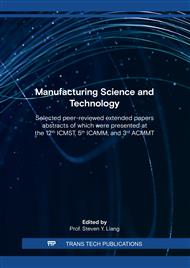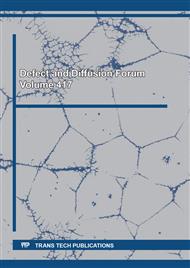p.3
p.9
p.17
p.23
p.29
p.35
p.45
p.51
Optimization of Tungsten Inert Gas Welding Process Parameters for AISI 304 Stainless Steel
Abstract:
Tungsten Inert Gas welding process (TIG) has been widely used in industries. A robotic arm has been adopted in the industry with objectives to replace or efficiently improved some severe welding conditions where it is dangerous for human and to increase productivity and quality. This research is aimed to find the optimal conditions of TIG welding process on AISI 304 stainless steel. The design of experiments used a statistical method to determine the optimal TIG welding conditions providing the strongest tensile strength across the weldment. The fractional factorial experimental design and then the central composite design were used as a response surface method to find the optimal TIG welding conditions for AISI 304 stainless steel using robotics system. The statistically significant factors and their optimal values are the welding current (136 Ampere), welding speed (13 cm/min), wire feed rate (93 cm/min), and the arc gap (2.5 mm). After that, the residual stress caused by TIG welding at the optimal condition was measured by X-ray diffraction (XRD) technique. The results showed that the weldment obtained from the optimal welding conditions provides compressive residual stresses which cause the materials to be stronger.
Info:
Periodical:
Pages:
23-28
Citation:
Online since:
June 2022
Authors:
Keywords:
Price:
Сopyright:
© 2022 Trans Tech Publications Ltd. All Rights Reserved
Share:
Citation:



